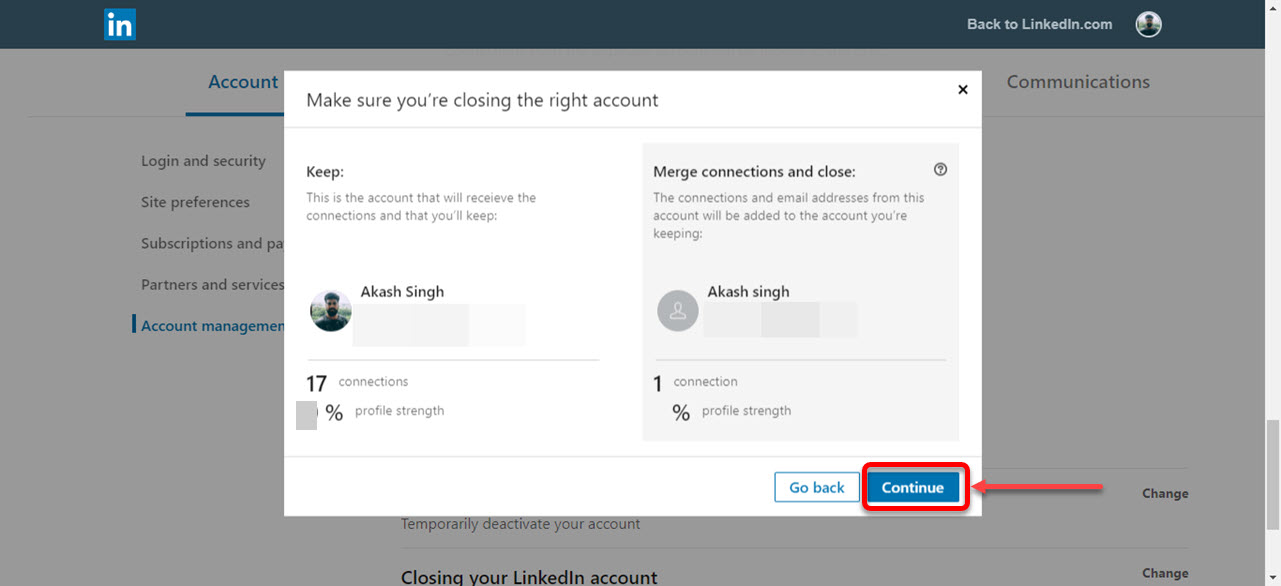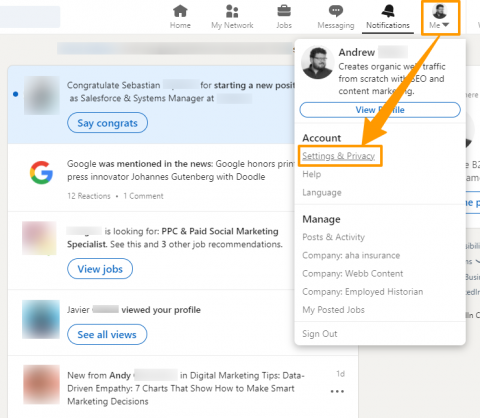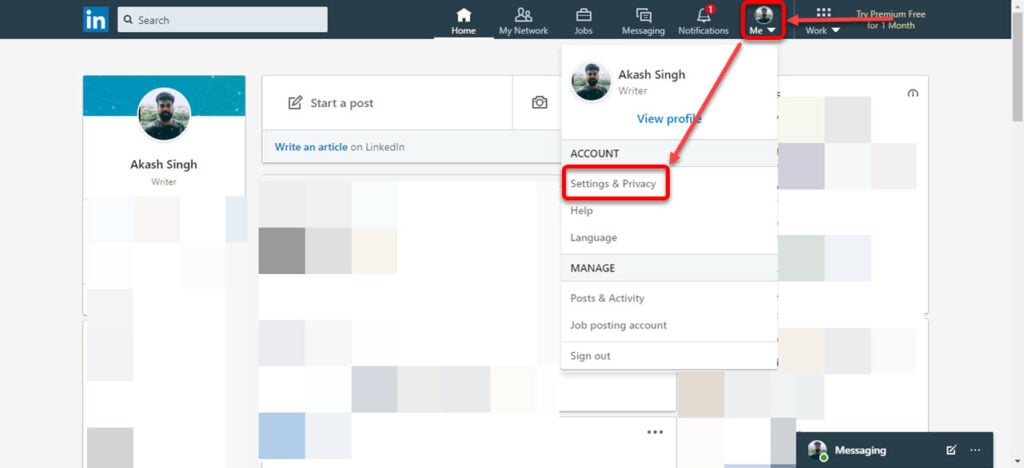In today’s digital world, LinkedIn is a crucial platform for networking and job hunting. Having multiple accounts can dilute your professional presence and cause confusion. This post will guide you through the importance of merging accounts and the steps to identify which ones should be consolidated.
Understanding the Importance of Merging LinkedIn Accounts

Have you ever wondered why you should consolidate your LinkedIn profiles? Well, let’s break down the reasons:
- Professional Clarity: Maintaining a single, comprehensive profile allows potential employers and colleagues to view your complete professional history. Imagine the confusion if they stumble upon two profiles with different experiences!
- Stronger Network: Combining connections from both accounts means a larger, more influential network. This can lead to better job opportunities, collaborations, and professional relationships.
- Enhanced Visibility: A single, optimized profile is more likely to appear in search results. This is crucial when recruiters are looking for candidates with your skill set.
- Efficient Management: It’s easier to update and manage one profile than to juggle two. You save time and reduce the risk of outdated information.
Moreover, consolidating can help prevent issues with LinkedIn’s policies. LinkedIn generally discourages maintaining multiple accounts, and having two could lead to restrictions or even account suspension. So, merging not only boosts your professional image but also keeps your account safe!
In summary, merging your LinkedIn accounts can significantly enhance your professional presence, making it easier for potential employers and connections to find and engage with you. So, if you’ve been hesitant about consolidating, consider these benefits as your motivation!
Also Read This: How to Bypass LinkedIn Identity Verification: Risks and Alternatives
Steps to Identify Accounts for Merging

Now that you understand why merging is important, let’s dive into identifying which accounts you should consolidate. Here’s a step-by-step guide:
- Log In to Both Accounts: Start by accessing both LinkedIn accounts you wish to merge. Ensure you have the login credentials for both, as this will be crucial for the merging process.
- Compare Profiles: Take a close look at both profiles. Ask yourself:
- Which account has the most connections?
- Which one displays a more comprehensive work history?
- Is there one account that shows your best skills and endorsements?
Once you’ve identified the accounts, you’re ready to proceed with the merging process. Keep this checklist handy to ensure nothing important gets left behind!
Also Read This: How to Add Multiple Positions at the Same Company on LinkedIn
3. How to Prepare for Merging Your LinkedIn Profiles

Before diving into the merging process, it’s crucial to lay the groundwork. Think of this like preparing for a big move; you wouldn’t just throw everything in boxes without a plan, right? Here’s what you need to do:
1. Assess Your Current Profiles:
- Log in to both LinkedIn accounts and take a good look at each profile.
- Identify which account has the most valuable connections, endorsements, or job experiences.
- Make a note of any profile sections that stand out, like recommendations or featured projects.
2. Decide on a Primary Account:
You need to choose one profile as your primary account. This will be the account you keep after the merge. Consider the following:
- Which account has more connections, endorsements, and recommendations?
- Which profile represents your professional identity more accurately?
3. Inform Your Connections:
It’s a good practice to notify your connections about the merge. You can post an update explaining that you’re consolidating your profiles for better engagement. This way, they are aware of the changes and can connect with you under your primary account.
4. Back Up Important Data:
Before merging, export your LinkedIn data from both accounts. Here’s how:
- Go to Settings & Privacy on LinkedIn.
- Select Data Privacy and click on Get a copy of your data.
- Choose the options that are most relevant to you, like connections, messages, or endorsements.
This backup will ensure that you don’t lose any critical information during the merge.
Also Read This: How Many Characters Can a LinkedIn Post Have? Content Limitations Explained
4. Step-by-Step Guide to Merging Your LinkedIn Accounts
Now that you’re all set up, let’s walk through the steps to merge your LinkedIn accounts. It’s easier than it sounds! Follow these steps:
Step 1: Log into Your Primary Account
First, log into the LinkedIn account you decided to keep. This is going to be the central hub for all your professional connections.
Step 2: Access LinkedIn’s Account Merging Tool
LinkedIn doesn’t have a direct “merge accounts” feature, but you can accomplish this by following these steps:
- Go to the Help Center by searching “Help” in the search bar.
- Type merging accounts in the search box.
- You will find instructions on how to proceed with merging.
Step 3: Verify Your Identity
LinkedIn may require you to verify your identity. This could involve confirming your email or phone number linked to your primary account.
Step 4: Choose the Account to Merge
Once your identity is verified, you’ll be prompted to choose the account you want to merge. Select your secondary account.
Step 5: Confirm the Merge
After choosing your secondary account, review the information once more. LinkedIn will show you a summary of what will be merged. If everything looks good, hit the Confirm button!
Step 6: Check Your Merged Profile
After the merge, take a moment to review your new profile. Check if all your connections, endorsements, and details are in order. It’s a good idea to tweak your summary or add new skills to reflect your merged profile accurately.
And voila! You’ve successfully merged two LinkedIn accounts. Embrace this fresh start and reconnect with your professional network!
Also Read This: How to Share an Article on LinkedIn to Showcase Your Expertise
5. Common Issues and How to Troubleshoot Them
Merging two LinkedIn accounts can be a smooth process, but you might encounter a few hiccups along the way. Here’s a rundown of the most common issues and some handy troubleshooting tips to help you navigate through them.
1. Verification Problems
Sometimes, LinkedIn may require you to verify your identity during the merging process. If you find yourself stuck at this stage, ensure that you have access to the email addresses associated with both accounts. Check your inbox (and spam folder) for any verification emails from LinkedIn.
2. Duplicate Connections
When merging accounts, you might notice that some connections are duplicated. While LinkedIn typically manages this automatically, you can manually remove duplicates by going to your connections list and clicking on "Manage connections." From there, you can easily remove any duplicates.
3. Incomplete Profile Information
After merging, you might find that some information didn’t transfer over correctly. Double-check your profile to ensure that your work experience, education, and skills are all accurately reflected. If something seems off, you can edit it directly on your profile page.
4. Account Access Issues
If you suddenly can’t access your newly merged profile, try logging out and back in again. If you’re still having trouble, use the “Forgot password?” option to reset it. Sometimes, it’s just a matter of a simple login glitch!
5. Missing Recommendations
Recommendations from your old account might not transfer over. If this happens, reach out to those who recommended you and ask if they’d be willing to do it again on your new, consolidated profile. It’s a great way to keep your endorsements fresh!
Don’t let these common issues discourage you. With a little patience and the right troubleshooting steps, you’ll have your profiles merged in no time!
6. Benefits of Having a Single LinkedIn Profile
Now that you’ve successfully merged your LinkedIn accounts, you might be wondering what the real benefits of having a single profile are. Let’s dive into some of the perks that come with consolidating your professional presence.
- Streamlined Networking: With one profile, all your connections will be in one place, making it easier to engage with your network. You’ll have a clearer view of your professional relationships and can nurture them more effectively.
- Consistent Personal Branding: A single profile allows you to present a unified personal brand. Potential employers and collaborators will get a cohesive understanding of your skills and experiences without the confusion of multiple profiles.
- Improved Visibility: By merging your connections and endorsements, you increase the visibility of your profile. This means potential employers or clients can find you more easily, leading to more opportunities.
- Enhanced Credibility: Having one profile with a comprehensive list of recommendations and endorsements boosts your credibility. It shows that you have a solid professional network and are recognized in your field.
- Efficient Job Searching: Searching for jobs is much simpler with one profile. You can easily track applications and updates, and you won’t miss out on opportunities due to a fragmented online presence.
In summary, merging your LinkedIn accounts not only tidies up your online presence but also enhances your professional opportunities. So, embrace the change and enjoy the benefits of a consolidated profile!
 admin
admin








